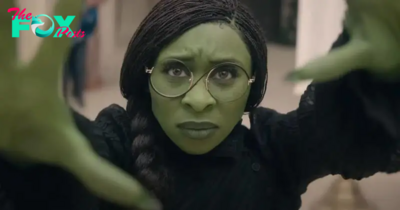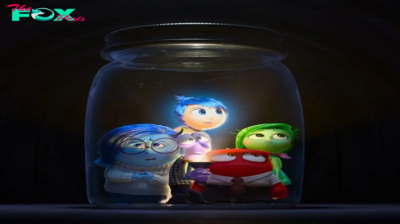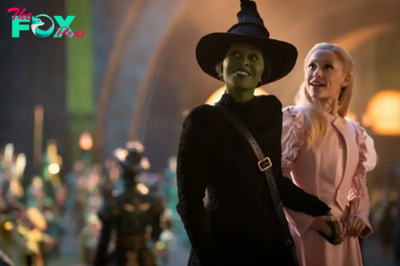Entertainment
Pedro AlmodÃģvarâs The Room Next Door Finds Joy Even as It Stares Down DeathÂ
For those who have been following his career from the start, the idea of Pedro AlmodÃģvarâs growing olderâand increasingly using his films to reflect on illness and death, or at least just the inevitable slowdown that comes for most of usâis a bitter pill. None of us relishes thinking about our own mortality. But sometimes it feels worse to think about losing an artist we love, especially one as vital and ageless as AlmodÃģvar. One of his finest, most moving works, 2019âs Pain and Glory, reckoned with the nuisances of aging, as well as the trauma of being an artist in crisis. But the directorâs first English-language movie, The Room Next Doorâplaying in comPetition here at the Venice Film Festivalâdelves even further into the murky waters of our feelings about death. Julianne Moore and Tilda Swinton star as Ingrid and Martha, old friends who bonded in New York in the 1980s but who have been out of touch for a long time. They reconnect when Ingrid learns that Martha is being treated for cancer, and their rekindled friendship veers into complicated territory.
The Room Next Door is an adaptation, written by AlmodÃģvar himself, of Sigrid Nunezâs 2020 novel What Are You Going Through, and at first the movieâs tone feels a little strange, untethered to any easily identifiable genre. Itâs a story about friendship, clearly, but also about a woman facing a solitary and difficult choice. The dialogue sometimes feels flat and wooden. At one point Martha reminds Ingrid of the lover theyâd once shared, though technically, heâd drifted toward Ingrid after he and Martha had broken up. âHe was a passionate and enthusiastic lover, and I hope he was for you too,â Martha says, and though she means it, the line hits with a thud. And even if AlmodÃģvar goes for a laugh here or there, overall the tone of The Room Next Door is a bit somberâalmost like a black comedy, but not quite.
Read more: The Best New Movies of August 2024
And yet, by the end, something almost mystical has happened: the movieâs final moments usher in a kind of twilight, a state of grace that you don't see coming. Ingrid, a successful writer, first hears of Marthaâs illness at a signing event for her most recent book. Though she hasnât seen Martha in years, she dutifully visits her at the hospital where sheâs being treated. They catch up quickly: Martha, who worked for years as a war correspondent, has a daughter, Michelle, born when she was still a teenager. Michelle has accused Martha of being a bad mother, and is particularly resentful that she has withheld information about Michelleâs father. Martha denies none of it. Still, she wishes she and Michelle were closer, and her grave illnessâshe has stage three cervical cancerâputs a new spin on things. Sheâs hoping the experimental treatment sheâs been receiving will work; sheâs devastated when she learns that it isnât.
And so she procures for herselfâon the Dark Web, she tells Ingrid, almost in a whisperâan illegal pill that will put an end to all of it. She has worked out all the details: sheâll leave a note for the police, explaining that she alone is responsible for her fate. And she doesnât want a stranger discovering her body. When she decides the time is right, what she wants, she says, is to know that a friend is in âthe room next door.â She has decided Ingrid will be that friend, though Ingrid, who has a quivering, electric, nervous quality beneath her veneer of self-confidence, at first wants no part of it.
Ingrid has re-entered Marthaâs life in a whirlwind of good intentions. But does she really want to help Martha die? Sheâs not so sure. (She has also, unbeknownst to Martha, reconnected platonically with that old shared boyfriend; his name is Damian, and heâs played, with a kind of droll swagger, by John Turturro.) Ingrid and Marthaâs rekindled friendship seems shaky at first. Martha has decided that she doesnât want to die in her own smartly appointed Fifth Avenue apartment. So she books a tony modern country house somewhere near Woodstockâit has amazing views of nature that only money can buyâand she and Ingrid pack their bags and drive up. Almost as soon as they arrive, Martha panics. Sheâs forgotten the precious euthanasia pill; she insists that she and Ingrid drive back to Manhattan immediately to get it. Ingrid barely hides her annoyance; how did she get into this situation, anyway? Briefly, the movie tap-dances into screwball-comedy territory. It would all be very funny, if Martha werenât suffering so much.
But The Room Next Door is on its way to place of tenderness and accordâwe just canât see it yet. At one point, Martha rages against her illness, but also against the cheap bromides people use when they talk about cancer, often referring to treating it as a âbattle,â a test of strength thatâs also somehow a measure of virtue. âIf you lose, well, maybe you just didnât fight hard enough,â she says bitterly. No wonder she wants to write the ending to her own story: âI think I deserve a good death."
Swintonâs Martha is frail but still, somehow, has the vitality of a pale blond moon; Moore, with her burgundy-red hair and intense, searching eyes, brings a rush of color into her life. They talk about books, art, movies: Martha has been thinking about the closing lines of James Joyceâs The Dead, so they spend an evening watching John Hustonâs gorgeous 1987 version on the rental's DVD player. They make conversation about little things: a recent book that interests them both, Roger Lewisâ Erotic Vagrancy, about the partnership of Elizabeth Taylor and Richard Burton; the reproduction of Edward Hopperâs People in the Sun that hangs in the rented houseâs hallway. Their idle conversations are a kind of casual nourishment.
It's a pleasure to watch these two actors together. Martha and Ingrid riff against and annoy each another until suddenly, they find their groove, and the movie does too. Shot by Eduard Grau, the film has a rich, handsome look, and the production and costume design are characteristically AlmodÃģvarian in their jubilance. The sets include stunningly orchestrated combinations of pickle green and tomato red; there are artfully shabby velvet couches and walls casually sponged with cobalt-blue paint. (The production designer is INBAl Weinberg; the costumes are by Bina Daigeler.) Itâs all marvelous to look at, but this kind of visual splendor might evoke some guilt, too. Is it wrong to be ogling Marthaâs fabulous, mega-chunky color-blocked knit pullover when you know, as she does, that death is just one little pill away?
But as the story wheels forward, it becomes clear that the joy AlmodÃģvar takes in colors and patterns isnât beside the point; it is the point. Heâs created a kind of cocoon world for these two women, as they embark together on a bumpy adventure. And thatâs how he beckons us into their story. Lime and lilac, scarlet and saffron: he knows what colors work together, which combinations will surprise us or offer a jolt of delight. The colors of The Room Next Door are its secret message, a language of pleasure and beauty that reminds us how great it is to be alive. If itâs possible to make a joyful movie about death, AlmodÃģvar has just done it.
-

 Entertainment2h ago
Entertainment2h ago13 Most Romantic Movies Based on Novels
-

 Entertainment4h ago
Entertainment4h agoWhere Is Yellowstoneâs Kelly Reilly From? Fans Shocked When She Reveals Real Accent
-

 Entertainment4h ago
Entertainment4h agoWhy Is the âWickedâ Movie Split in 2 Parts? Director Jon M. Chu Explains Reasoning
-

 Entertainment9h ago
Entertainment9h agoNew Paltz Holiday Celebration Returns with a Carnival and Parade
-

 Entertainment10h ago
Entertainment10h agoIs Ariana Grande Quitting Pop Music? Inside Her Singing Plans After Starring in âWickedâ
-

 Entertainment10h ago
Entertainment10h agoWho Was Chad McQueen in âThe Karate Kidâ? âCobra Kaiâ Season 6 Dedicates Episode to Late Actor
-

 Entertainment18h ago
Entertainment18h agoInside Out 2 to Frozen II: Top 15 Highest-Grossing Animated Movies
-

 Entertainment19h ago
Entertainment19h agoHow Docuseries Making Manson Complicates the Story Behind the Tate-LaBianca Murders

























